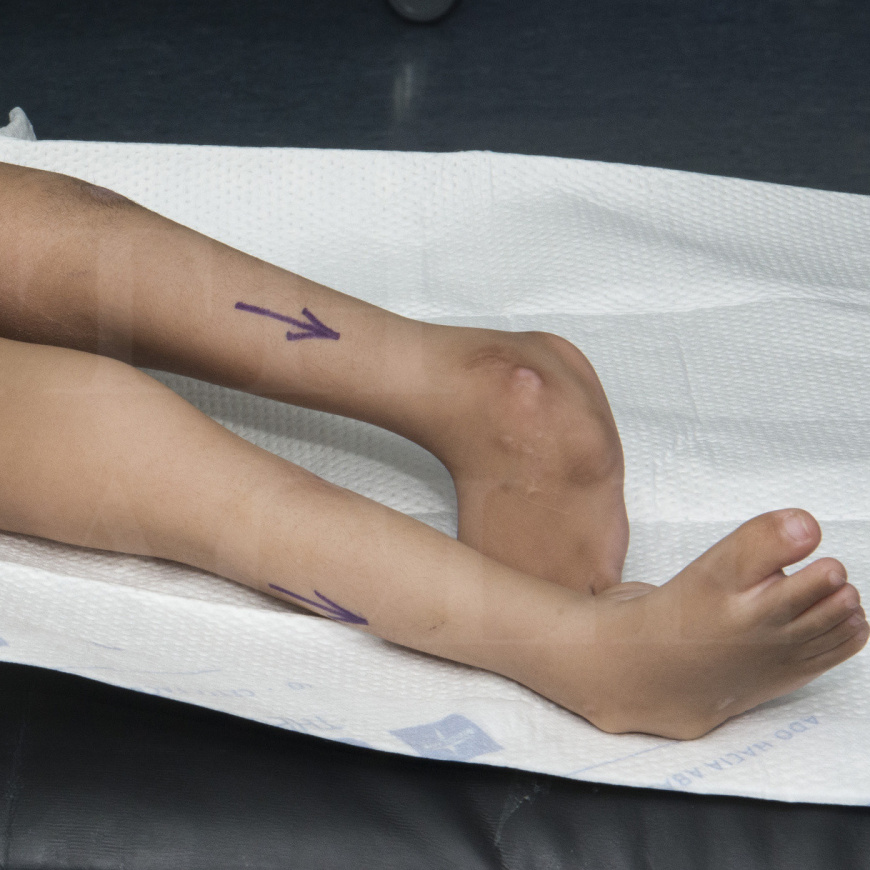Posteromedial release for clubfoot in Spina Bifida
Overview

Subscribe to get full access to this operation and the extensive Foot Surgery Atlas.
Learn the Posteromedial release for clubfoot in Spina Bifida surgical technique with step by step instructions on OrthOracle. Our e-learning platform contains high resolution images and a certified CME of the Posteromedial release for clubfoot in Spina Bifida surgical procedure.
Myelomeningocele (Spina Bifida) is a neural tube defect that occurs approximately one in every 2500 births. Antenatal screening and recommendations regarding the importance of folic acid during pregnancy have reduced the incidence.
The clinicians most frequently involved in the management of patients with myelomeningocele are the neurosurgeon, urologist and orthopaedic surgeon. The severity of orthopaedic involvement depends of the neurological level, generally defined as the lowest level below which there is no function.
The L3 level is an important delineator since these patients will have some quadriceps activity, which allows them to mobilise independently. Higher level lesions will require assistive devices to ambulate.
Foot deformity is very common in myelomeningocele occurring in 30-50% of cases. The higher the level of neurological injury, the greater its incidence and Clubfoot (Talipes) is the commonest foot deformity seen.
It is important to achieve a plantigrade foot whether a child is ambulant or not because even in “high level” patients (those with thoracic or thoracolumbar neurological levels) the objective is to stand them in into standing frames to improve bone strength, renal function and to boost patient psychological state.
Whilst Ponseti manipulations, casting and tenotomy are successful in some cases failure rates are significant in teratological feet and posteromedial release remains an important alternative in such cases. The surgical principles to follow are similar to correcting idiopathic CTEV. However, it is important to realise that patients with Spina Bifida will usually be insensate which increases the risk of pressure sores and wound infections. In most cases in these patients the aim will be to provide a flail foot that can then be controlled in ankle foot orthosis (AFO).
Ponseti IV, Smoley EN. The Classic: Congenital clubfoot: the results of treatment. Clinical Orthopaedics Related Res. 2009 May; 467(5):1133-1145.
Author: Ed Bache FRCS(Tr & Orth)
Institution: The Birmingham Childrens hospital, Birmingham, UK.
Clinicians should seek clarification on whether any implant demonstrated is licensed for use in their own country.
In the USA contact: fda.gov
In the UK contact: gov.uk
In the EU contact: ema.europa.eu
Online learning is only available to subscribers.



















